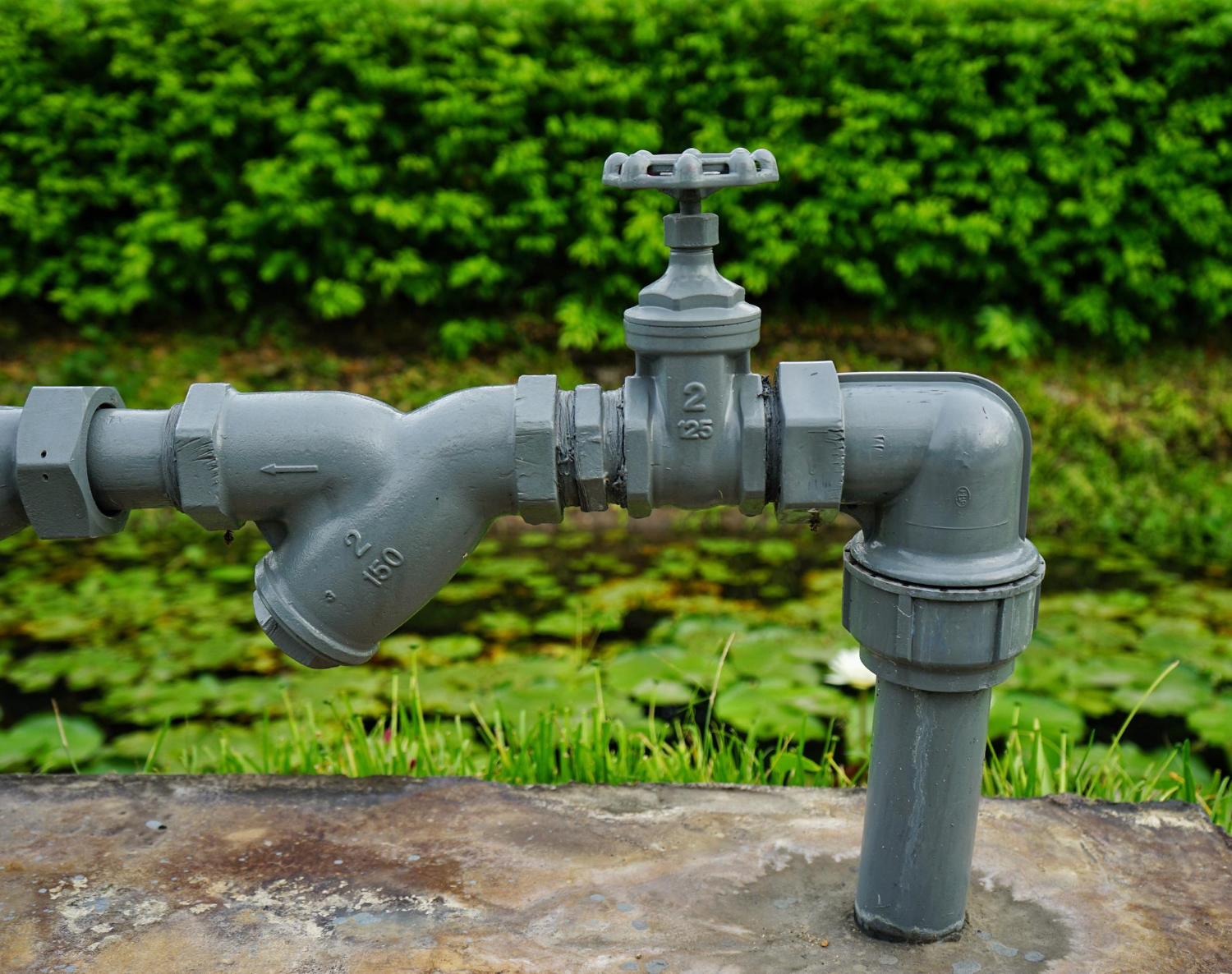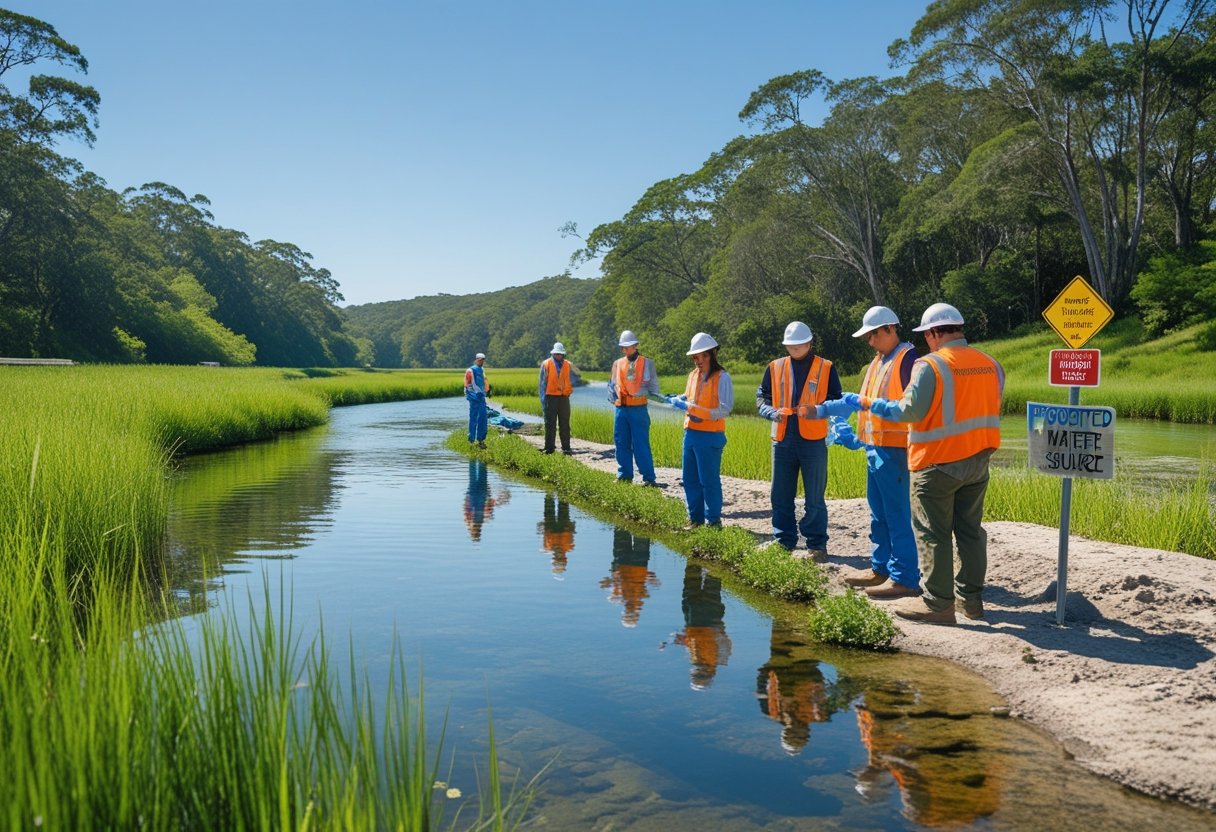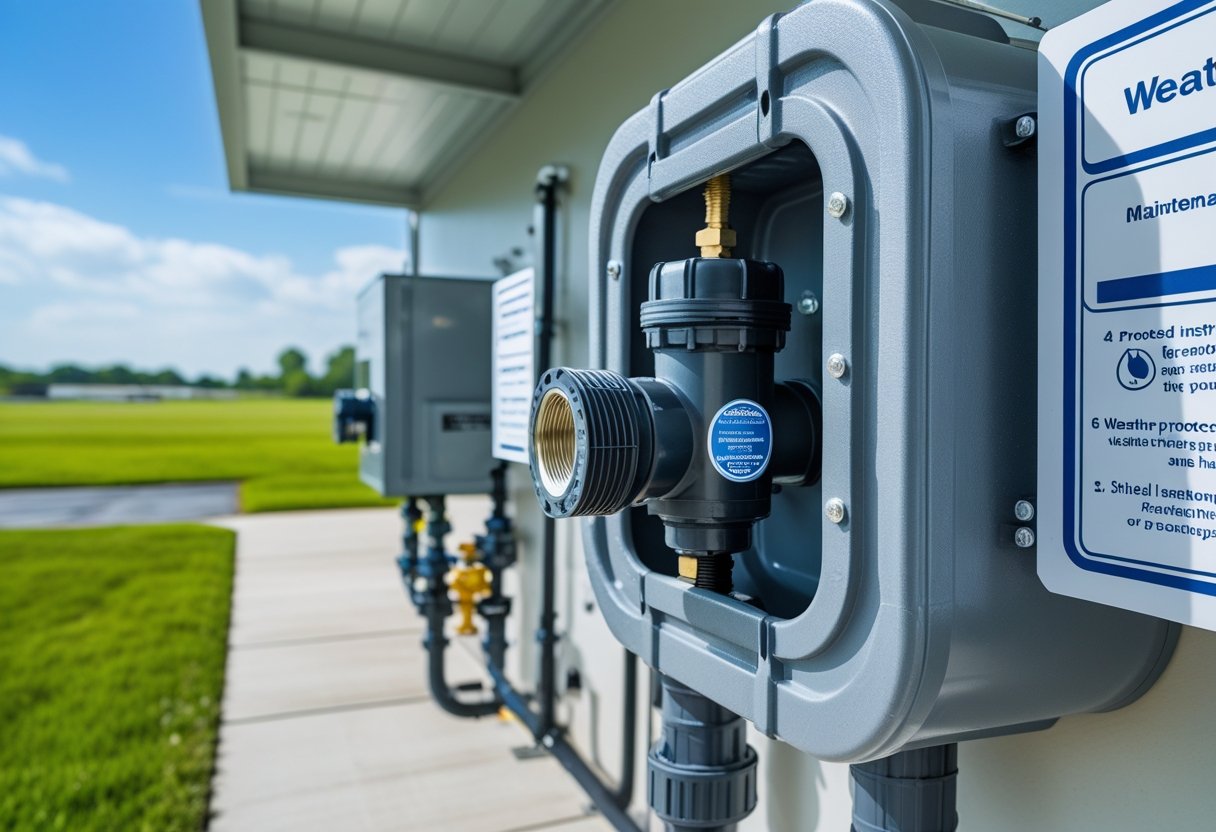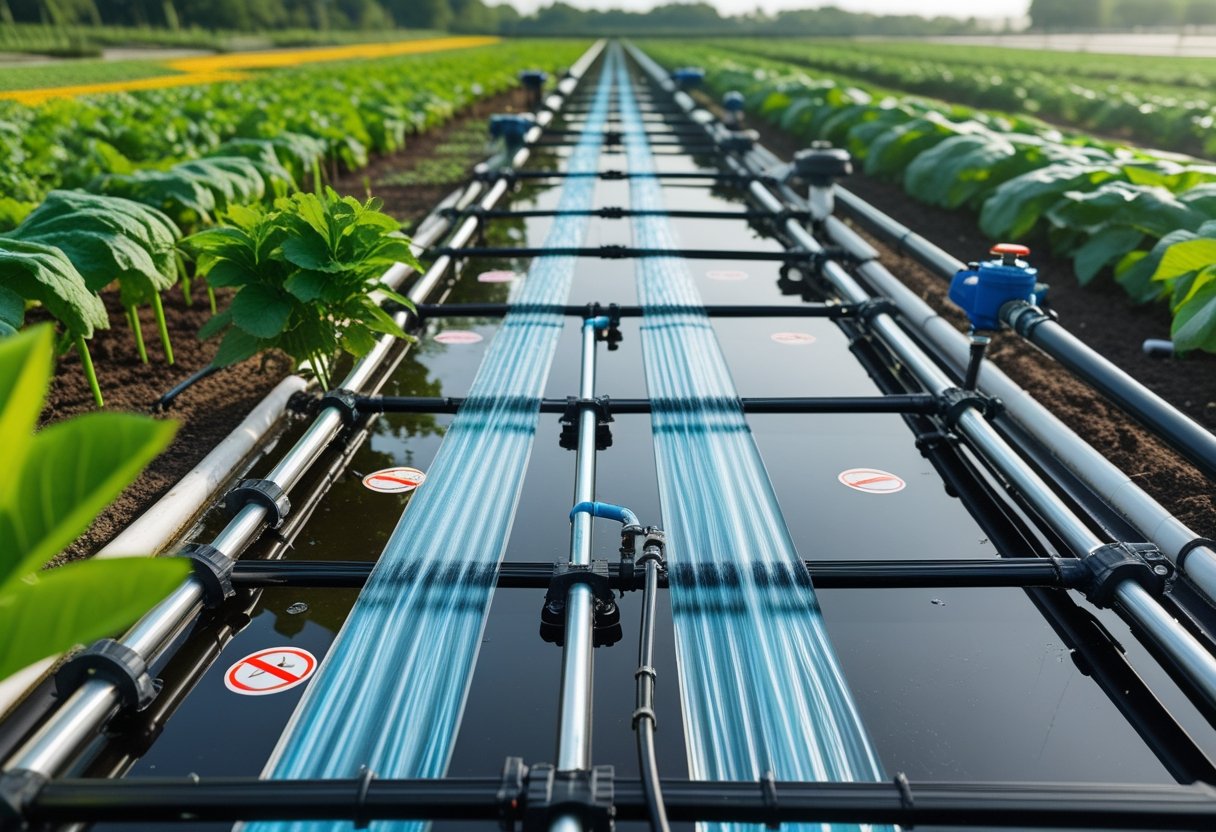Annual backflow testing is vital in keeping drinking water safe and clean. When we turn on our taps, we expect clean, uncontaminated water to flow. A yearly backflow test checks the device that stops dirty water from flowing backward into your water supply, ensuring it works properly to protect commercial properties.
A certified technician performs these tests by checking the backflow prevention device's valves and pressure levels. The process needs to happen every year because these devices can wear down or break over time. Many states and local water companies require yearly testing to ensure everyone stays safe.
Regular testing might seem like a hassle, yet it remains one of our best defenses against water contamination. The test takes a short time and provides peace of mind knowing your drinking is completely safe.
In this guide, you’ll see how backflow occurs (back-siphonage vs. back-pressure), which preventers belong on high- vs. low-hazard lines, and what a certified annual test actually includes.
We’ll also cover installation details that affect test results (clearances, drainage, freeze protection), the records regulators expect, and the correction timelines if a device fails so you can schedule confidently, avoid penalties, and keep tenants safe.
Here's what you need to know:
- Backflow basics and risks for commercial buildings
- Backflow prevention methods and devices
- Selecting and installing the right backflow preventer
- Annual testing and maintenance
- Compliance and regulatory requirements
- Consequences of skipping annual backflow testing
Keep reading! For commercial properties, this isn’t a “nice to have”, it’s a code-backed safeguard that keeps contaminants out of your potable system and your building in good standing with the water authority.
Backflow basics and risks for commercial buildings
Backflow threatens clean water systems by allowing contaminated water to mix with the public supply. This issue puts communities at risk and requires proper prevention methods to maintain safe drinking water.
What is backflow?
Backflow happens when water flows in the opposite direction in pipes and plumbing systems. This reversed flow can pull dirty water into clean water lines. The two main types of backflow are back siphonage and backpressure:
- Back siphonage occurs when negative pressure pulls contaminated water backward
- Backpressure happens when downstream pressure exceeds the supply pressure
Prevention devices like check valves and air gaps stop contaminated water from entering clean water lines. These devices need regular testing to work properly.
Health risks from contaminated water
Contaminated water carries serious health risks when it enters clean water systems, and common contaminants include:
- Chemicals from irrigation systems
- Sewage and wastewater
- Pesticides and fertilizers
- Industrial fluids and metals
These substances can make people sick through drinking, cooking, or bathing. Even small amounts of contamination can affect hundreds of people connected to the same water supply.
Public health impacts and safety obligations
Water contamination from backflow can spread disease quickly through communities. Past incidents have caused outbreaks of:
- Gastrointestinal illness
- Skin infections
- Chemical poisoning
Local governments require backflow prevention to protect public health, and most cities mandate yearly device testing and inspections. Certified testers check valves, inspect parts, and verify the proper function of prevention devices.
Backflow prevention methods and devices
Backflow prevention devices are crucial safeguards in plumbing systems to stop contaminated water from flowing backward into clean water supplies. These devices come in several types and must be selected based on specific needs.
How backflow preventers work (overview)
Backflow preventers create physical barriers between potable water and potential contaminants. They use check valves, air gaps, and pressure differentials to maintain water flow in one direction.
A properly working backflow preventer will automatically shut off if dangerous conditions arise, and this immediate response helps protect drinking water from contamination. These devices require proper maintenance and yearly testing to ensure they function correctly, and a certified technician should perform all installations and testing.
Types of backflow prevention assemblies
Reduced Pressure Zone (RPZ) Assemblies
- The most reliable type of protection
- Contains two check valves and a relief valve
- Used in high-hazard applications
Double Check Valve Assemblies
- Two spring-loaded check valves
- Ideal for low-hazard situations
- Common in irrigation systems
Pressure Vacuum Breakers
- Protection against back-siphonage
- Must be installed above all downstream piping
- Popular for lawn sprinkler systems
Selecting and installing the right backflow preventer
The right backflow preventer depends on the level of hazard and local plumbing codes. High-risk situations need RPZ devices, while lower-risk applications can use simpler options.
Location matters for installation and devices must be placed where they're accessible for testing and maintenance. Some types also need protection from freezing temperatures.
Professional installation is essential, as a certified plumber will ensure:
- Correct device orientation
- Proper clearances
- Compliance with local regulations
- Adequate support for heavy assemblies
Device selection by hazard level (high vs. low)
Start with a formal cross-connection survey and classify each use as high hazard (health risk) or low hazard (non-health). High-hazard conditions, those involving chemicals, industrial fluids, sewage, or any substance that could endanger health, typically require air gaps or RPZ (Reduced Pressure Zone) assemblies because they provide active relief if checks fail or pressures reverse.
Low-hazard uses (non-health) are often protected by double check (DC) assemblies or pressure vacuum breakers (PVB) where back-siphonage is the only concern. Document the rationale (process served, chemical exposure, likelihood of back-pressure) so device choice is defensible during audits.
EPA’s Cross-Connection Control Manual defines program elements, distinguishes containment vs. isolation protection, and stresses selecting assemblies that match the actual hazard and hydraulics; state/local codes then set the specific device approvals and test frequencies.
Installation location and clearances (access, orientation)
Place testable assemblies above grade and in plain view, with a working room for shut-offs and test cocks. Avoid vaults/pits that can flood; submerged devices can fail unpredictably and are hard to inspect.
Mount assemblies level and per flow direction, keep them out of high-traffic damage zones, and provide permanent supports for larger sizes. Put identification tags where testers can read them without disassembly, and photograph the nameplate and location for your compliance log.
Effective cross-connection programs rely on installations that can be inspected and tested and on accurate device inventories with locations and serial numbers, your placement and documentation should facilitate that.
Freeze protection and drainage (especially for RPZ relief)
RPZs are designed to discharge when internal pressure zones are abnormal or debris fouls checks, this is a safety feature. Provide a drain or receptor sized for expected relief flow and maintain a visible air gap between the relief port and any receptor; never hard-pipe relief to sanitary.
In cold climates, keep assemblies indoors near the entry or in heated enclosures; protect upstream/downstream runs and ensure relief water can’t ice walkways or equipment. Add signage showing isolation valves so staff can shut down quickly during extreme weather.
Installations must allow testing, maintenance, and proper operation, and that programs should set local rules for inspection and device performance, drainage and protection details are part of making the assembly function as intended.
Annual testing and maintenance
Regular testing and maintenance of backflow prevention devices play a vital role in protecting public water supplies from contamination. Professional inspections help identify issues early and keep systems working properly.
Why annual testing is critical
Backflow preventers are mechanical devices that can wear down or fail over time, but annual testing spots problems before they become dangerous. These tests check if the device can still prevent contaminated water from flowing backward into clean water supplies. Even small failures could lead to unsafe drinking water.
Furthermore, regular testing saves money by catching minor issues before they turn into major repairs. It also helps avoid costly water damage from device failures.
What a certified backflow test includes
Our experts perform detailed inspections of all backflow preventer components during annual testing. This includes checking seals, springs, and moving parts for wear, as each component must meet strict performance standards to pass inspection.
The testing process involves:
- Pressure differential checks
- Valve operation verification
- Leak detection
- Relief valve function testing
Routine maintenance and common repairs
When we find issues during testing, we address them immediately, as quick repairs keep systems working safely and extend device life.
Common maintenance tasks include:
- Cleaning internal components
- Replacing worn parts
- Adjusting pressure settings
- Lubricating moving parts
We document all maintenance work for compliance records.
Compliance and regulatory requirements
Local and state laws require annual backflow testing. These rules protect public health and safety. Water suppliers must enforce testing requirements to meet federal standards, and building owners need proof of annual testing for their records.
Test results get reported to local water authorities, and failed devices must be fixed or replaced quickly to maintain compliance.
Who enforces backflow testing and what codes apply
EPA fact sheets note that cross-connection and backflow programs are set and enforced at the state or municipal level, so specifics like approved assemblies and testing frequency vary by jurisdiction; owners should follow their local water authority’s requirements.
In most jurisdictions, the water supplier or local water authority enforces testing via ordinance or policy adopted under state drinking-water programs. They set approved assembly lists, tester certification criteria, and testing intervals (often annual for commercial).
Building owners are responsible for keeping devices operable and proving compliance on request. Keep in mind that plumbing codes (state/municipal adoptions of IPC/UPC) also govern where and which devices are required; your water authority’s rule is the controlling enforcement pathway.
Reporting and recordkeeping requirements
Maintain a master register for every device: location, type/size, serial number, served system, install date, last test date/result, tester ID, and gauge calibration date.
File the annual test report (pass/fail, repairs) with the water authority per their submission method (portal/email/form) and keep copies on site. Affix a test tag showing date and result; mirror the tag info in your digital repository so auditors can reconcile field tags with records. Schedule reminders 30–45 days before due dates to avoid enforcement actions.
Recordkeeping is a core pillar of cross-connection control programs, water systems should track testable devices and verify that required testing occurs on schedule.
Correction timelines and retesting after failures
If an assembly fails, treat it as an operational outage: isolate the hazard if required by your authority, repair or replace the device, and then perform a retest to document that it now passes.
Submit the passing report linked to the original failure within the authority’s correction window (often stated in the notice). Build a preventive plan if failures repeat, add strainers/filtration upstream, relocate devices from flood-prone areas, or upgrade to RPZ/air gap where hazard or hydraulics demand.
Local programs establish enforceable procedures for inspection, testing, and corrective actions, including verification that devices are repaired/retested and that records reflect the final status
Consequences of skipping annual backflow testing
Skipping backflow testing creates serious risks that can affect personal safety and the property. The effects range from contaminated drinking water to hefty fines and damaged plumbing systems.
Potential health risks
Untested backflow preventers can allow contaminated water to mix with clean drinking water. This contamination might include sewage, chemicals, or other harmful substances. When contaminated water enters the drinking supply, it can cause severe illness. People may experience stomach problems, skin rashes, or more serious health issues.
The risk becomes even higher in buildings with complex plumbing systems, like hospitals or apartment complexes. In these places, many people could get sick from one failed backflow preventer.
Legal penalties and fines
Most cities require yearly backflow testing by law, and missing these tests can result in fines starting at $500 and going up to several thousand dollars. Building owners might face additional penalties for continued non-compliance, and some areas charge daily fines until the testing is completed.
Additionally, property insurance may not cover water damage if the backflow preventer hasn't been tested regularly. This leaves owners responsible for repair costs.
Impacts on building and public water systems
Failed backflow preventers can cause drops in water pressure throughout neighborhood water mains. This affects not just one building, but entire blocks. Low pressure in fire hydrants puts public safety at risk, as fire departments need proper water pressure to fight fires effectively.
Water main breaks can happen when pressure problems aren't fixed, too, and these breaks are expensive to repair and can flood streets and buildings. Fixing widespread contamination in water supply systems costs cities millions of dollars. These costs often get passed to residents through higher water bills.
Conclusion
Annual backflow testing is the linchpin of a compliant, risk-controlled water program. The recipe is consistent: select the right assembly for the hazard (air gap/RPZ for high hazard; DC/PVB where allowed), install it where it can be tested and drained, and keep clean, verifiable records. Treat failures like operational outages, repair, retest, and file the passing report within the authority’s window.
If your due date is approaching, or you’ve seen nuisance discharges, pressure complaints, or repeated failures, bundle the essentials in one visit: cross-connection review, annual test, minor repairs, and documentation submission.
Ready to simplify compliance? Schedule your annual backflow test and we’ll deliver pass/fail reports, tags, and a remediation plan if needed, so your building stays safe, open, and audit-ready.
Contact us to arrange annual backflow testing at your property to avoid potential safety risks and financial penalties.











